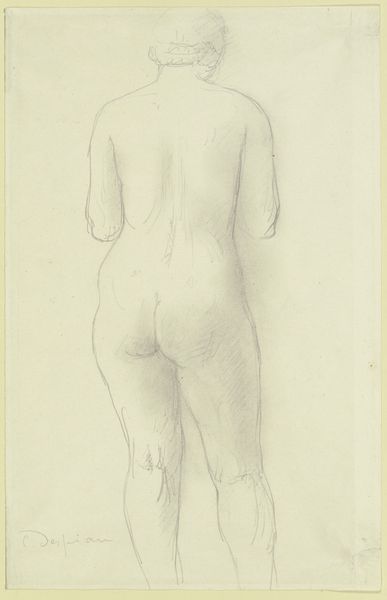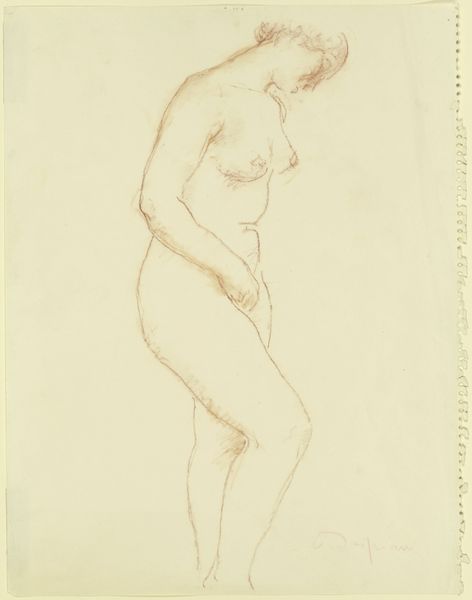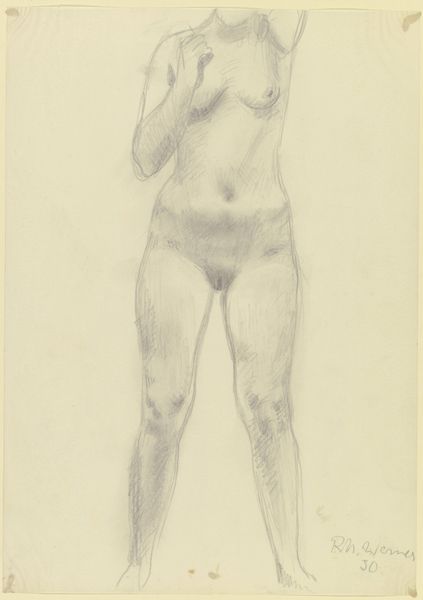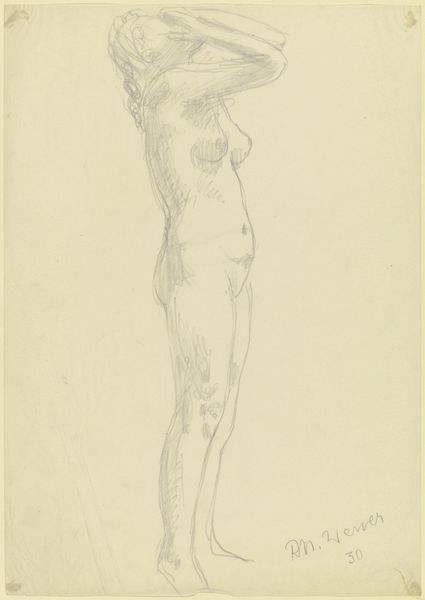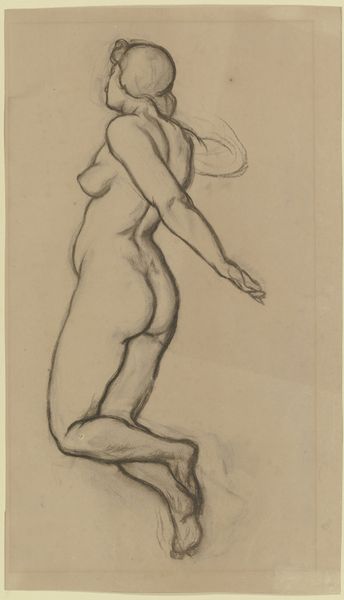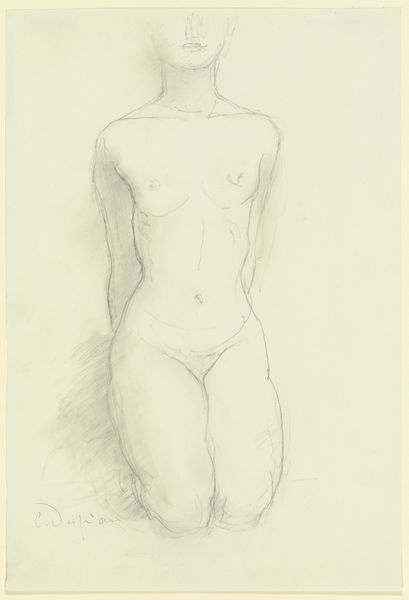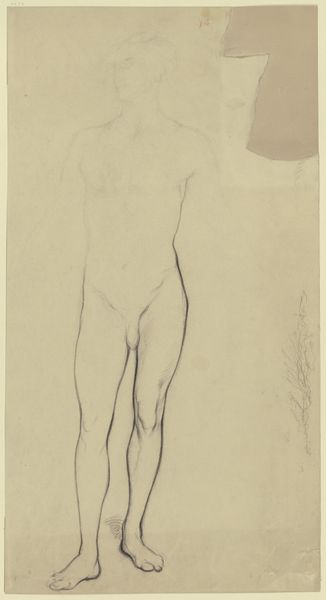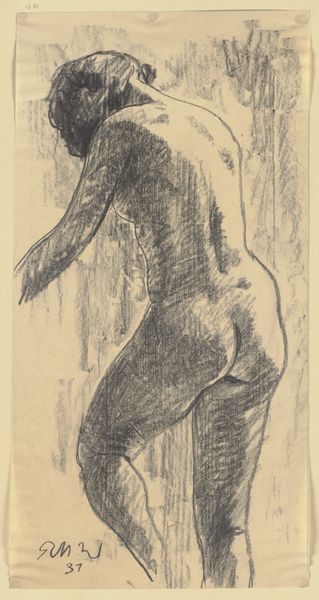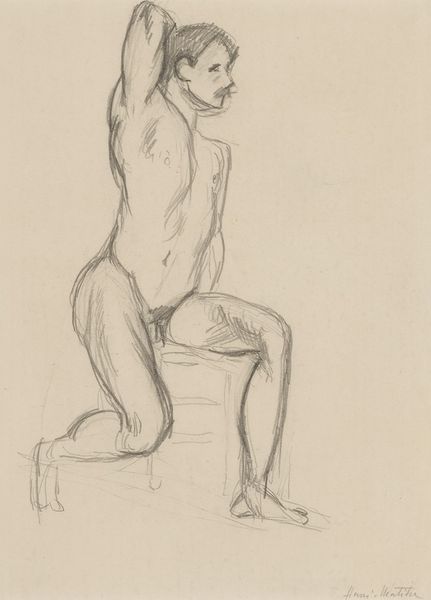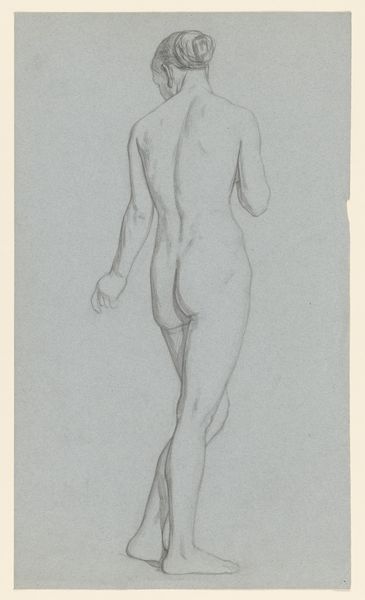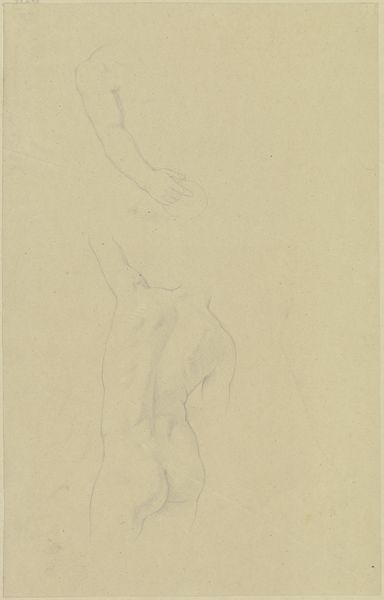
Stehender weiblicher Akt nach rechts, den Oberkörper vom Betrachter abgewandt, den linken Fuß auf einer Erhebung abstellend
0:00
0:00
drawing, paper, pencil, graphite
#
portrait
#
pencil drawn
#
drawing
#
pencil sketch
#
figuration
#
paper
#
pencil
#
graphite
#
pencil work
#
academic-art
#
nude
Copyright: Public Domain
Curator: Welcome. Before us, we see a graphite drawing by Wilhelm Rietschel titled "Stehender weiblicher Akt nach rechts, den Oberkörper vom Betrachter abgewandt, den linken Fuß auf einer Erhebung abstellend," which translates to "Standing female nude to the right, torso turned away from the viewer, left foot resting on an elevation." It currently resides here at the Städel Museum. Editor: My immediate impression is one of academic study, almost like a preliminary exploration. There’s a sensitivity to the lines but also a cool detachment, as if the artist is more interested in anatomy than emotion. Curator: Indeed. Rietschel’s style aligns with the academic art tradition, emphasizing precision and classical ideals. The pose, turning away, allows the artist to showcase knowledge of form while shielding us from direct engagement. It’s a calculated move that reinforces the objectification inherent in nude studies during that era. Editor: The turn certainly speaks volumes. While we analyze the objectification of the nude in academic art, let’s not forget the agency that women lose when their image becomes just an “academic exercise.” What kind of access did these women have to the art world and to what degree did that affect how they were represented? Curator: A very important consideration. In this context, the female nude served largely as a means for artists, predominately men, to demonstrate their skills and understanding of the human form within established conventions. While many may see "objectification", during the development of "art for art's sake", this study moved away from biblical representation. This in turn became more accessible in an educational form to female students as the Academies of art became more integrated in Europe. Editor: Precisely. What I see in this image reflects power dynamics and broader issues around who controls the gaze, who is empowered to create, and whose bodies are rendered passive, viewed for "academic value." If this was used as an educational work for women too, do you know of any context on how those specific artists took advantage of these studies or of ways that it liberated the way they drew and studied anatomy? Curator: The influence on subsequent women artists is a complex conversation in its own right. Some embraced this classical training to challenge its limitations and subvert those norms by introducing a new perspective on female embodiment, challenging art historical constructs. Editor: Which brings it all full circle. Art can be a tool, and an object, but only we, as the public, are the ones to assign value to that piece of work, and it only goes so far as the conversation will let it. Curator: A perfect place to stop, reminding ourselves to engage with art, question assumptions, and be aware of its influence on culture and societal values.
Comments
No comments
Be the first to comment and join the conversation on the ultimate creative platform.
